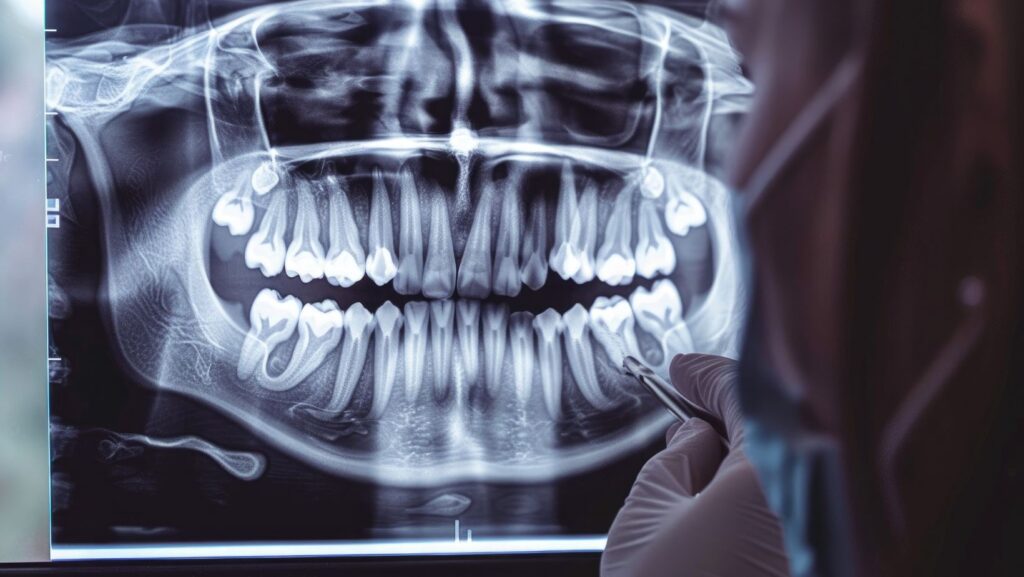Have you ever wondered how your dentist can spot potential problems in your mouth before you even feel any symptoms? The answer lies in the power of dental imaging. This technology provides a detailed view of your oral health, allowing dentists to identify issues early on when they’re often easier to treat.
However, even with the advancements in dental imaging, many people still don’t fully understand its importance. That said, this article will explore how dental imaging works and why it’s essential for maintaining a healthy smile.
1. Discovering Cysts, Tumors, and Abnormalities
Advanced imaging techniques, such as cone beam computed tomography (CBCT), allow for a 3D view of the oral and maxillofacial region, providing an unprecedented level of detail in detecting cysts, tumors, and other abnormalities in the jaw or soft tissues. Often, these abnormalities do not present symptoms in their early stages, making regular imaging a crucial part of preventive dental care. Early detection through CBCT scan technology or panoramic X-rays ensures that these conditions can be addressed before they become life-threatening. Timely diagnosis enables appropriate referral for biopsy or surgical treatment, significantly improving the prognosis in cases where the growths are cancerous.
2. Identifying Cavities
Dental imaging, particularly X-rays, is a critical tool in identifying cavities that aren’t visible during a regular visual inspection. Cavities can often form in areas that are hard to examine, such as between the teeth or under existing fillings. Panoramic imaging provide detailed images of the internal structure of the teeth, allowing dentists to spot early signs of decay before it becomes a more significant problem. Early detection of cavities means that treatment can begin before the decay causes severe damage, reducing the need for more invasive procedures like root canals or extractions.
3. Detecting Bone Loss
Dental imaging is also essential for detecting bone loss, particularly in patients with periodontal (gum) disease. Periodontal disease can erode the bone that supports the teeth, leading to loosening and, eventually, tooth loss if left untreated. X-rays are particularly effective at revealing early signs of bone deterioration, which might not be noticeable during a routine oral examination.

By identifying bone loss early, dentists can recommend treatments such as deep cleaning (scaling and root planing), medications, or even surgical interventions to stop or slow down the progression of the disease.
4. Monitoring Tooth Development in Children
In pediatric dentistry, panoramic imaging is an invaluable tool for monitoring the growth and development of a child’s teeth and jaws. As children grow, their teeth undergo significant changes, and X-rays can help track how their permanent teeth are developing below the gum line. Imaging allows dentists to detect issues such as impacted teeth, overcrowding, or abnormal tooth development at an early stage. This preventive care and early identification are essential for planning interventions such as braces or other orthodontic treatments. By addressing these issues before they cause complications, dentists can help ensure proper alignment of the teeth and jaw, preventing more complex problems later in life.
5. Detecting Impacted Teeth
Impacted teeth, particularly wisdom teeth, are a common issue that can lead to pain, infection, or damage to surrounding teeth if not addressed early. Dental imaging, through panoramic X-rays or CBCT scans, helps in precisely locating impacted teeth, even before they begin to cause symptoms. This early detection allows dentists to plan for their removal or manage the situation to prevent further complications. In cases where surgical extraction is necessary, visiting an experienced oral surgeon in Rockford, IL can ensure a safe and efficient procedure. Wisdom teeth, in particular, often require surgical intervention, making it crucial to consult a specialist when needed.
6. Evaluating Root Canals
Imaging is also crucial for the successful treatment and evaluation of root canals. Root canal procedures involve removing infected tissue from the inside of the tooth, and the dentist needs to ensure that all of the infected material has been removed. Dental X-rays are used both before and after the procedure to check for infection in the surrounding bone and ensure that the treatment is thorough. Post-procedure X-rays also help in identifying any remaining infection or complications that may require further treatment.
7. Assessing Jawbone Health
For patients considering dental implants, dental imaging plays a crucial role in assessing the health of the jawbone. Implants require a solid and healthy bone structure for successful placement, and imaging helps dentists evaluate whether a patient has sufficient bone density to support the implant. Advanced imaging, such as CBCT scans, provides a detailed 3D view of the jawbone, allowing for precise measurements and planning. If the bone density is inadequate, imaging helps guide decisions about bone grafting procedures, which can restore the jawbone to a healthy state for implant placement.
8. Early Detection of Oral Cancer
Oral cancer is often asymptomatic in its early stages, making regular dental imaging a critical part of cancer screening.

Imaging techniques can sometimes reveal abnormal growths or changes in the soft tissues and bones of the mouth that could indicate the early stages of cancer. While imaging alone cannot diagnose oral cancer, it serves as an essential tool in detecting suspicious areas that warrant further investigation through biopsy. By catching oral cancer early, dentists can refer patients to specialists for treatment before the disease progresses to more advanced stages.
Conclusion
Dental imaging is more than just a diagnostic tool; it’s a proactive partner in your oral health journey. By providing early detection of potential issues, these technologies empower dentists to deliver timely and effective treatments, saving you time, money, and discomfort. So, if you want to safeguard your smile for years to come, don’t overlook the importance of dental imaging.
